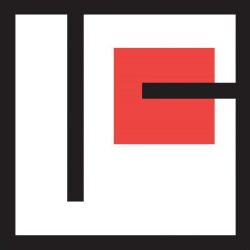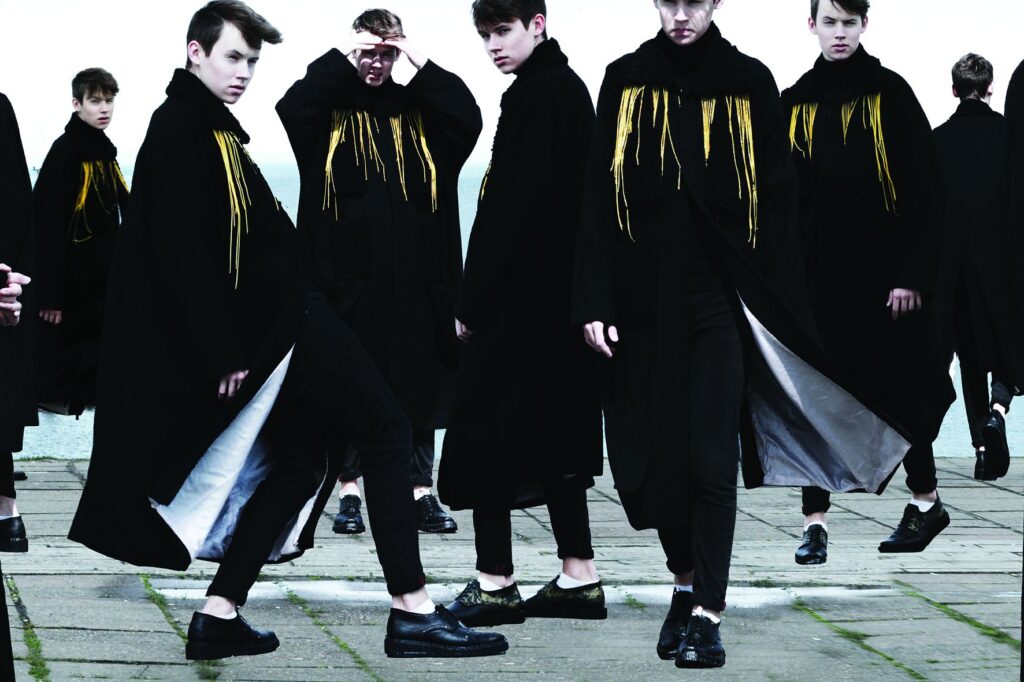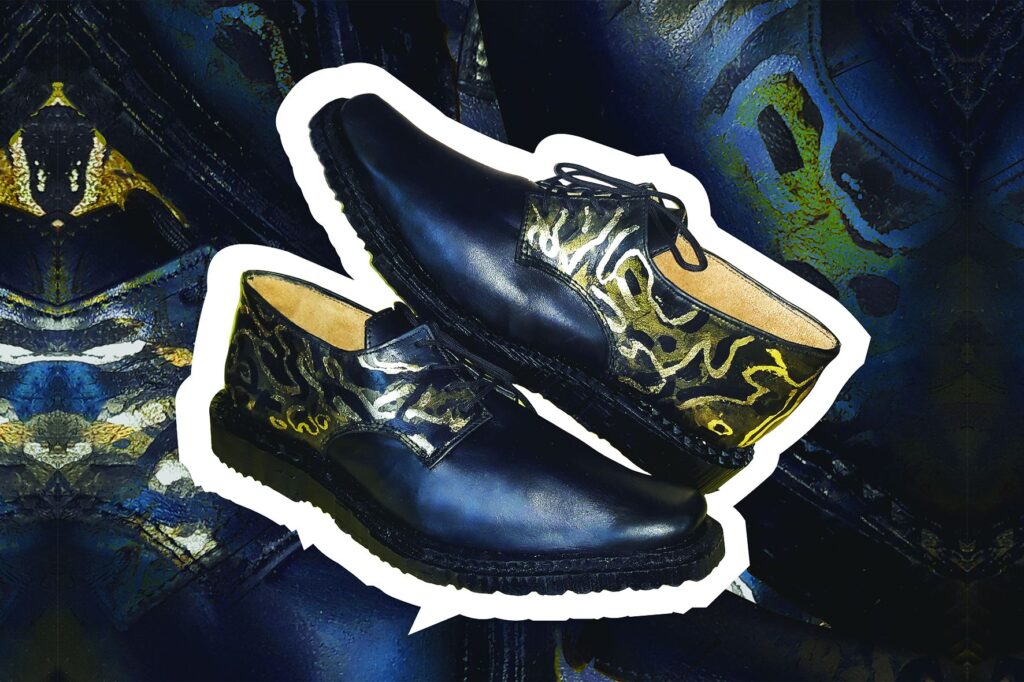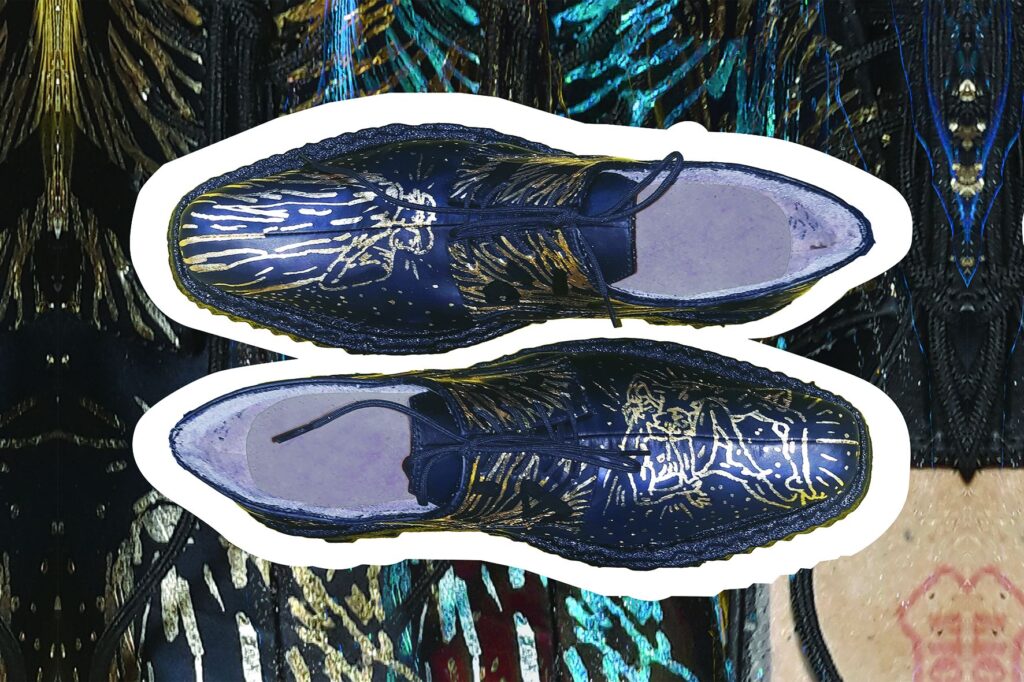Tulenevalt lõputöö uurimusest ja praktilisest osast leidsin maker-movement printsiipidele tuginedes erinevaid tööprotsessi lahendusi. Tööprotsesside puhul püüdsin kasutada võimalikult palju taaskasutatavaid materjale.
Aja kokkuhoiuks leidsin alternatiivsed lahendused kannakappide, ninapitside ning jalatsitaldade loomiseks. Eelnevalt nimetatud detailide valmistamine ja paigaldamine on käsitööjalatsite puhul kõige aeganõudvamad. Lisaks on jalatsitaldade valmistamine ja lihvimine üks keerukamaid tööetappe.
3D-meediumite kasutamisel polnud võimalik töö täies mahus materjale taaskasutada. Seda peamiselt seetõttu, et prinditavad filamendid korduvkasutatavaid jääke ei tekita. Printimisel valedest seadistustest ilmnenud vigade ning muude rikete tõttu tekkis ebavajalik ressursi- ja ajakulu. Saadud kogemused näitasid, et 3D-printimine on põhjendatud pigem väiksemamahuliste objektide printimiseks, kuna nende puhul on väiksem nii ajakulu kui ka võimalike rikete tekkimise võimalus. Meediumi kasutamine tööprotsessis vähendas keskmist ajakulu küll 33% kuid osutus 25% kallimaks kui traditsiooniline jalatsi valmistamine.
CNC freesimise puhul oli võimalus kasutada uusi ja põnevaid ning lisaks taaskasutatavaid materjale. Nimetatud meediumi kasutamine vähendas keskmist ajakulu samuti 33% ning tänu võimalusele rakendada taaskasutatavaid materjale tööprotsessi tekkis võrreldes traditsioonilise jalatsi valmistamisega 69-protsendiline materjalikulu säästmine. Line-X pihusti kasutamine säästis materjalikulu võrreldes traditsioonilise jalatsi valmistamise viisiga 27%. CNC freesimise miinuseks oli aga korduvkasutamatute jääkmaterjalide teke.
Tööprotsessi kokkuvõtteks leian, et käsitööjalatsite valmistamise lihtsustamiseks ja kiirendamiseks on põhjendatud 3D-meediumite puhul väiksemate objektide ehk kannakappide ja ninapitside printimine, CNC freesimise puhul taldade valmistamine.
Arvan, et vajalike oskustega või isetegijate abiga on võimalik loodud tööprotsesse kasutades nii nahadisaini osakonna tudengitel kui Pallase välistel huvilistel võimalik käsitööjalatseid ise luua. Maker-liikumise põhimõtted tarbida olemasolevaid jataaskasutatavaid materjale ning panna inimesed iseseisvalt looma ja ennast arendama loob eeskujuliku ja keskkonnasõbraliku elukorralduse.
Loodud käsitööjalatsite valmistamise protsesside soodsama aja ja ressursikulu saavutamiseks leian, et 3D-meediumid vajavad veel aega, et areneda. Kui suudetakse leida lahendus, kus esemete printimine oleks odavam, kiirem ja õnnestuks igal katsel oleks tehnoloogia kasutamine põhjendatud. CNC freesimise tehnoloogia edasiarenduseks leian, et jääkide vältimiseks tuleks leida lahendus, kus mittekorduvkasutatavad materjalid suudetaks taaskasutatavateks muuta.
The main focus of the thesis is to find a favourable way to create artisan footwear since the traditional methods are rather difficult and also time and resource consuming. To do so I’m going to examine the Maker movement principles due to it’s known use of modern technology and digital mediums while maintaining the environmentally friendly attitude. Are there stages in the process that can be accelerated? Is it possible to cut down the consumption of time and resources? Is the use of modern technology justified against the well known techniques that are used in the creation of artisan footwear today?
The reason for the study is that neither I nor the Leather Department of Pallas University of Applied Sciences have any of the necessary tools nor machines to create artisan footwear. My main goal is to find a solution which can be used not only by the students of Pallas but also by anyone else who wishes to create footwear by hand.
The written part of the thesis focuses on the traditional techniques of artisan footwear, use of materials and decorations plus researching the Maker movement and finding the solutions. Practical part focuses on creation of artisan footwear using the found solutions based on the Maker movement principles. The outcome of the practical part is three pairs of artisan footwear which play a role in author’s collection. The creation of
author’s collection is sponsored by Cultural Endowment of Estonia.
The outcome of research in creation of artisan footwear is the use of 3D mediums, CNC machine and upcycling the materials which are considered as production waste.
Scanning the shoe last when using 3D mediums gives a good start to begin the process of artisan footwear. Using 3D modelling software it’s easy to create models of toe puff, heel counter and outsoles. Due to fact that 3D printing doesn’t produce any waste it isn’t possible to use material upcycling for given details. Printing toe puffs and heel counters turned out to be successful. While printing the outsoles the defects started to occur due to rather long time of printing process and possibility for errors to take place. Main complications while printing the outsole was that the printable object would get loose on the printer bed or the filament would tear off from the nozzle.
The use of 3D print turned out to be reasonable for smaller kind of details such as toe puff and heel counter. Using 3D mediums the creational process of artisan footwear turned out to be 33% faster than using the traditional methods but 25% more resource consuming.
Using CNC machines to create the outsoles gave a possibility to use various materials and upcycling. Due to characteristics of some materials it is reasonable to use Line-X spray. Line-X coating is high-performance spray-on elastomeric coating engineered for maximum durability which is used in farm equipment, war industry, construction equipment, etc. The given medium turned out to be also 33% faster than using the traditional methods but also 69% less resource consuming due to use of discarded objects and materials. Using Line-X spraying for outsoles created 27% less resource consuming method. The only con of the use of CNC machines is the genesis of production waste.
The least time and resource consuming method to create artisan footwear is to use material upcycling for uppers, 3D printing for toe puffs and heel counters and CNC machines for the outsoles. Less eco-friendly but less time consuming method is to replace 3D printing with Line-X spraying resulting in everlasting footwear.
In conclusion I find that using the found solutions and necessary skills in footwear creation processes or the help of the Maker movement labs it’s easier and less resource consuming to create artisan footwear by students of Pallas or any other individuals interested in it. Engaging Maker movement principles to upcycle materials and encourage people to create and self-develop establishes exemplary and eco-friendly way of living.
In order to achieve a way for more favorable time and resource cost for the craft manufacturing processes I find that 3D mediums still need time to develop. If a solution is found where printing of items is cheaper, faster and successful in every attempt the use of technology would be justified. In order for further development of the CNC milling technology I find that it needs a solution to turn residues into reusable materials.










